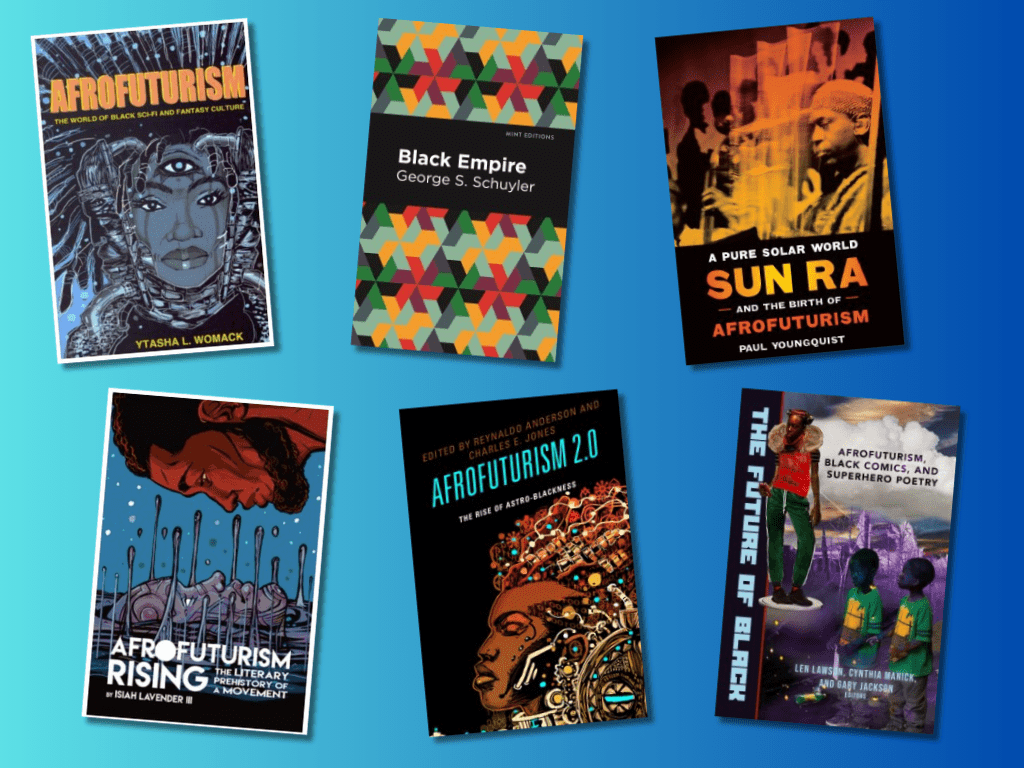Modern media can leave the impression that the African American experience, as depicted primarily in television and film, functions on a timeline illustrated as a backward-moving ray. Many of the stories are either contemporary, our starting point, or historical. Both are important but there is a necessity to imagine, envision, and construct the presentation of the African American experience in the future. Afrofuturism, as both a concept and a charge, challenges our perceptions of who we are today and where we have come from with the bold audacity of not only seeing ourselves in the future but in worlds and environments where our agency and autonomy is on full display.
The movement of Afrofuturism is articulated dynamically by noted University of California-Riverside Media Studies professor, John Jennings, below.
Afrofuturism is a cultural and artistic movement that blends elements of science fiction, historical fiction, fantasy, and African diasporic traditions to explore Black identity, history, and futures. It is an expansive framework that reimagines the past, critiques the present, and envisions transformative futures for people of African descent through literature, music, visual arts, film, and philosophy. Afrofuturism is not merely an aesthetic or artistic style but a means of empowerment, reclamation, and speculation that challenges dominant narratives about race, technology, and progress. It can be defined as an Afrocentric critical making process that uses speculative narratives to reimagine the past, interrogate the present, and design a future where people of the African Diaspora thrive according to their own agency.
The term "Afrofuturism" was first coined by cultural critic Mark Dery in his 1993 essay "Black to the Future," where he examined the lack of Black representation in science fiction and speculative fiction. However, Afrofuturist thought and artistic expressions predate the term. Early examples of Afrofuturist thinking can be found in the works of W.E.B. Du Bois, whose 1920 short story "The Comet" imagines a post-apocalyptic world where racial hierarchies are dissolved, and George S. Schuyler’s 1931 novel Black No More, which satirically examines race and transformation through technology.
In the realm of music, Sun Ra, a jazz composer and bandleader, was an early pioneer of Afrofuturism. He fused cosmic mythology, science fiction, and ancient Egyptian iconography to create a unique vision of Black liberation that transcended time and space. Sun Ra’s philosophy, which included statements such as "Space is the Place," positioned outer space as both a literal and metaphorical site of Black freedom, untethered from the historical constraints of oppression.
Afrofuturism frequently engages with African history and mythology, challenging the erasure of Black contributions to global civilization. This reclamation involves reinterpreting historical events, figures, and symbols through a futuristic lens, as seen in the works of artists like John Jennings and Ytasha Womack. By intertwining African cosmologies with speculative fiction, Afrofuturists assert that Black people have always played a role in shaping the future.
Many Afrofuturist works address contemporary issues such as systemic racism, social justice, and technological inequity. Through dystopian and utopian narratives, creators critique existing power structures and imagine alternative systems where Black people thrive. Films like Get Out (2017) and Black Panther (2018) employ speculative storytelling to highlight racial tensions and present visions of self-determination and empowerment.
Afrofuturism envisions futures where Black people are not only present but central to narratives of technological and societal progress. Whether through the comics of Milestone Media or the post-apocalyptic resistance in Octavia Butler’s Parable of the Sower, these stories depict futures where Black innovation, resilience, and spirituality drive human evolution and survival.
The literary landscape of Afrofuturism is rich and diverse, with writers like Octavia Butler, Samuel R. Delany, Nalo Hopkinson, and N.K. Jemisin expanding the genre’s boundaries. Butler’s Kindred (1979) blends time travel with historical fiction to confront the realities of slavery, while her Parable series explores climate change, social collapse, and spiritual adaptation. N.K. Jemisin, a Hugo Award-winning author, weaves African mythology and speculative elements into her narratives, as seen in The Broken Earth trilogy.
It’s important to remember that Afrofuturism is not just a genre or aesthetic. It is a way of seeing the world that centers Black people and focuses on their agency and how they thrive in the future.
Check out our Afrofuturist booklist for more relevant titles.
Have a question for Free Library staff? Please submit it to our Ask a Librarian page and receive a response within two business days.

